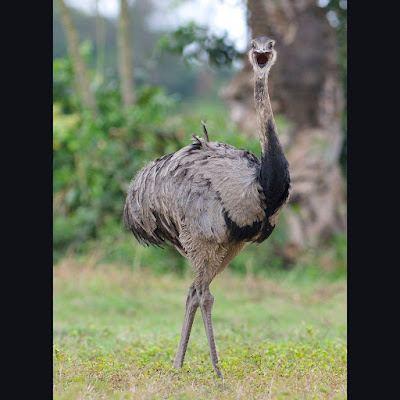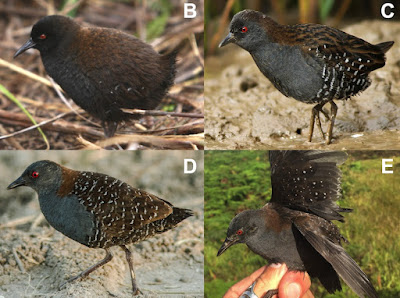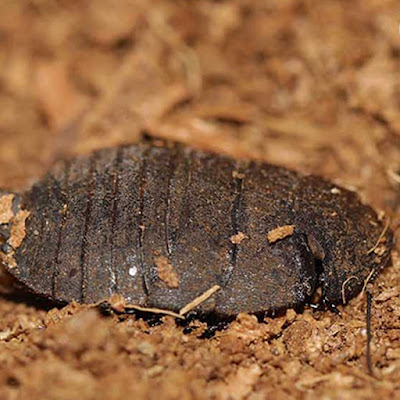Abstract
Recent phylogenetic studies question the monophyly of ratites (large, flightless birds incorporating ostriches, rheas, kiwis, emus and cassowaries), suggesting their paraphyly with respect to flying tinamous (Tinamidae). Flightlessness and large body size have thus likely evolved repeatedly among ratites, and separately in ostriches (Struthio) and emus (Dromaius). Here, we test this hypothesis with data from wing developmental trajectories in ostriches, emus, tinamous and chickens. We find the rate of ostrich embryonic wing growth falls within the range of variation exhibited by flying taxa (tinamous and chickens), but that of emus is extremely slow. These results indicate flightlessness was acquired by different developmental mechanisms in the ancestors of ostriches (peramorphosis) and the emu–cassowary clade (paedomorphosis), and corroborate the hypothesis that flight loss has evolved repeatedly among ratites.
KEYWORDS: ratites, flightlessness, evo devo, embryology, Palaeognathae, heterochrony
Cynthia Faux and Daniel J. Field. 2017. Distinct Developmental Pathways Underlie Independent Losses of Flight in Ratites. Biology Letters. DOI: 10.1098/rsbl.2017.0234
The face you make after seeing #BiologyLetters new cover... (photo from @daniel_j_field) via @RSocPublishing
---------------------------------------------------------------
روابط التحميل والمشاهدة، الروابط المباشرة للتحميل
او
شاهد هذا الفيديو القصير لطريقة التحميل البسيطة
كيف تحصل على مدونة جاهزة بآلاف المواضيع والمشاركات من هنا
شاهد قناة منتدى مدونات بلوجر جاهزة بألاف المواضيع والمشاركات على اليوتيوب لمزيد من الشرح من هنا
رابط مدونة منتدى مدونات بلوجر جاهزة بآلاف المواضيع والمشاركات في أي وقت حــــتى لو تم حذفها من هنا
شاهد صفحة منتدى مدونات بلوجر جاهزة بألاف المواضيع والمشاركات على الفيس بوك لمزيد من الشرح من هنا
شاهد صفحة منتدى مدونات بلوجر جاهزة بألاف المواضيع والمشاركات على الفيس بوك لمزيد من الشرح من هنا
تعرف على ترتيب مواضيع منتدى مدونات بلوجر جاهزة بآلاف المواضيع والمشاركات (حتى لا تختلط عليك الامور) من هنا
ملاحظة هامة: كل عمليات تنزيل، رفع، وتعديل المواضيع الجاهزة تتم بطريقة آلية، ونعتذر عن اي موضوع مخالف او مخل بالحياء مرفوع بالمدونات الجاهزة بآلاف المواضيع والمشاركات، ولكم ان تقوموا بحذف هذه المواضيع والمشاركات والطريقة بسيطة وسهلة. ــــــــــــــــــــــــــــــــــــــــــــــــــــــــــــــــــــــــــــــسلامـ.
















